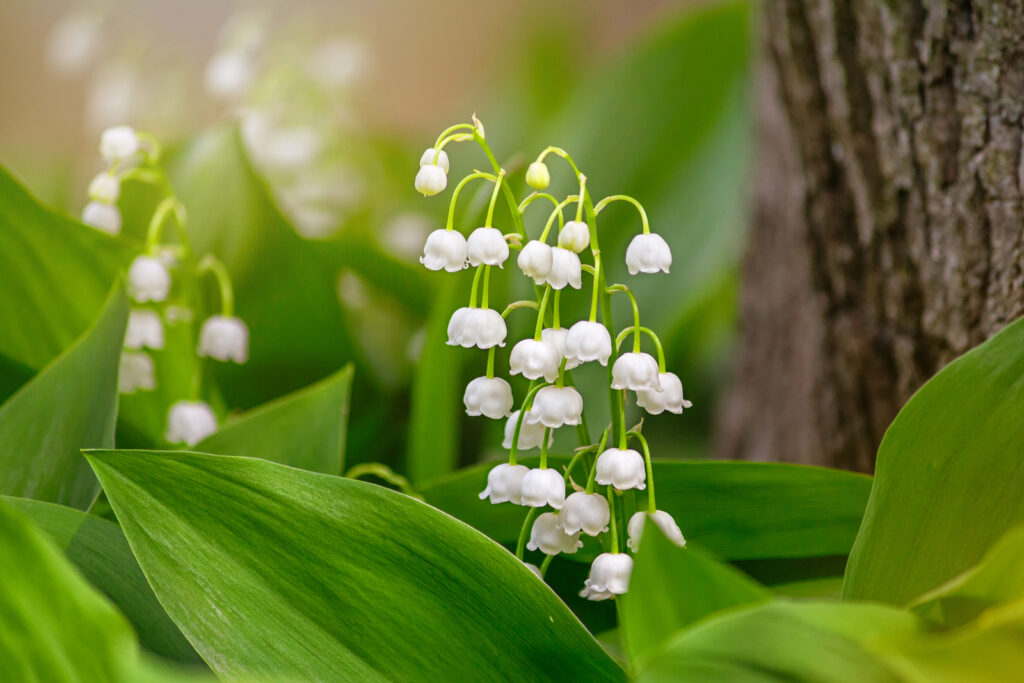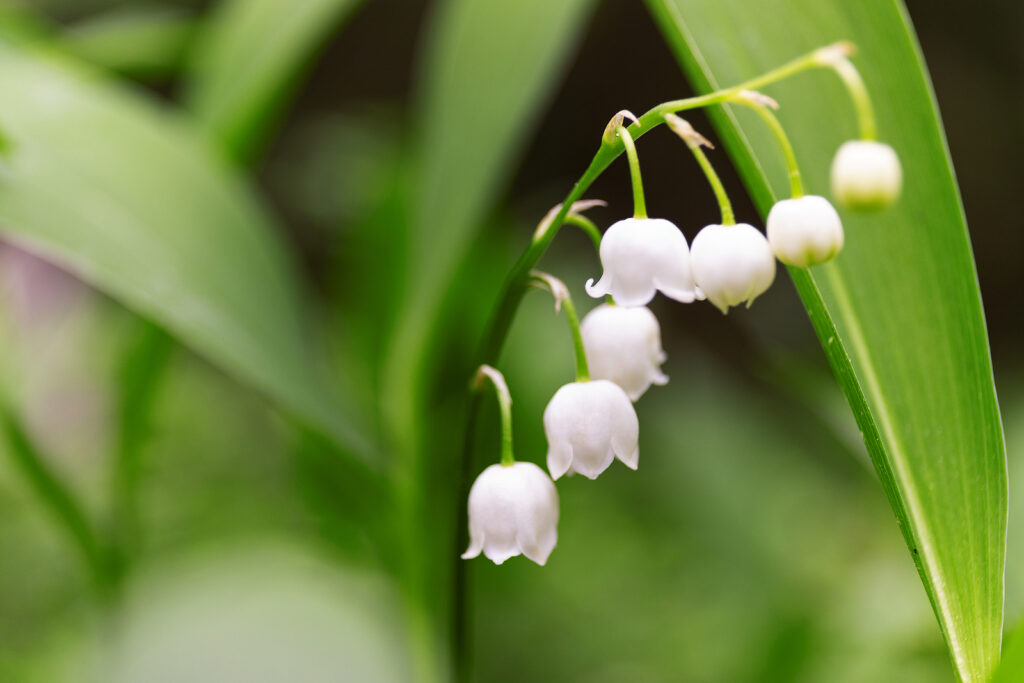Lily-of-the-Valley, Convallaria, is a delightfully fragrant spring bloomer with bell-shaped snowdrop flowers. Flowers are pendant and appear on one side of arching racemes.
Lily-of-valley is quick to naturalize and cover a large area with a rich green carpet of foliage. It is a good choice for a woodland or shaded garden; it will grow under the shade of large trees but may find it difficult to compete for moisture and nutrients.
A site in partial shade with evenly moist, rich soil is ideal. Convallaria will not survive in wet soil.
Keep lily-of-the valley away from small children, the plant is poisonous.
Convallaria is a genus of 3 species of rhizomatous perennials native to Northern temperate regions.

Get to know Convallaria
- Plant type: Perennial bulb, rhizome
- Growing Zones and range: Zones 3 to 9
- Hardiness: Hardy
- Height and width: 6 to 8 inches (15-20 cm) tall; 6 inches (15cm) wide
- Foliage: Dark green, basal, strap-shaped leaves
- Flowers: Pendent, fragrant white bell-shaped flowers with scalloped edges; blooms last 2 to 3 weeks; double and pink-flowered forms are available
- Bloom time: Mid-spring
- Uses: Grow in shade; dense ground cover; grow under trees and shrubs; good cut flower; grow in a woodland garden.
- Garden companions: Pachysandra terminalis, Vinca minor
- Common name: Lily-of-the-Valley
- Botanical name: Convallaria majalis
- Family: Liliaceae
- Origin: Woodland and alpine meadows in Northern temperate regions
Where to plant Convallaria
- Plant Convallaria in full sun in Zones 3-5 and Pacific Northwest; needs shade in Zones 6-9.
- Plant Convallaria in well-drained, acidic to neutral soil.

When to plant Convallaria
- Plant Convallaria in fall or spring; add aged compost to the soil before planting.
- Plant single rhizomes (commonly called pips) in fall before the soil freezes.
- Lift plants in late summer or early autumn to force indoors for winter bloom.
Planting and spacing Convallaria
- Space Convallaria 6 inches (15cm) or more apart.
- Set bulbs about 1 inch (2.5cm) deep.
How to water and feed Convallaria
- Keep the soil evenly moist to grow Convallaria—can withstand drought but leaves will brown.
- Fertilize Convallaria with a bulb food at planting time and in the spring of each year.
- Convallaria is prone to leaf rot and stem rot in wet conditions.
Convallaria care
- Cover Convallaria yearly with leaf mold or aged compost.
- Dig and divide clumps when blooms become scarse.
- For fragrant indoor display, lift and pot up rhizomes in autumn; they can be replanted outdoors after flowering.
Growing Convallaria as a houseplant
- Rhizomes are available in garden centers in fall and winter.
- Pot roots in an average growing medium that is kept evenly moist.
- Roots can also be dug from the garden in early spring and potted.
- Place pots a cool area with average humidity and bright light.
- Fertilize every other week during growing and flowering.
- Plants will bloom in about 4 weeks.
- After the plant has bloomed, withhold water until the foliage has turned brown, then move it to a shady spot in the garden.
Convallaria pests and diseases
- Anthracnose, white mold, and gray mold can occur.
- All parts of Convallaria are poisonous if ingested.

Convallaria propagation
- Sow seeds in containers in a cold frame as soon as they are ripe; remove the flesh of seeds before sowing.
- Separate rhizomes in autumn and replant them immediately.
Convallaria varieties to grow
- Convallaria majalis: Grows 6 to 8 inches tall; arching stems of small nodding usually white flowers; right red berries appear in autumn. Cultivars include: ‘Aureo-variegata’ leaves variegated yellow; ‘Flora Plean’ and ‘Prolificans’ have double flowers; ‘Rosea’ has light pink flowers.















